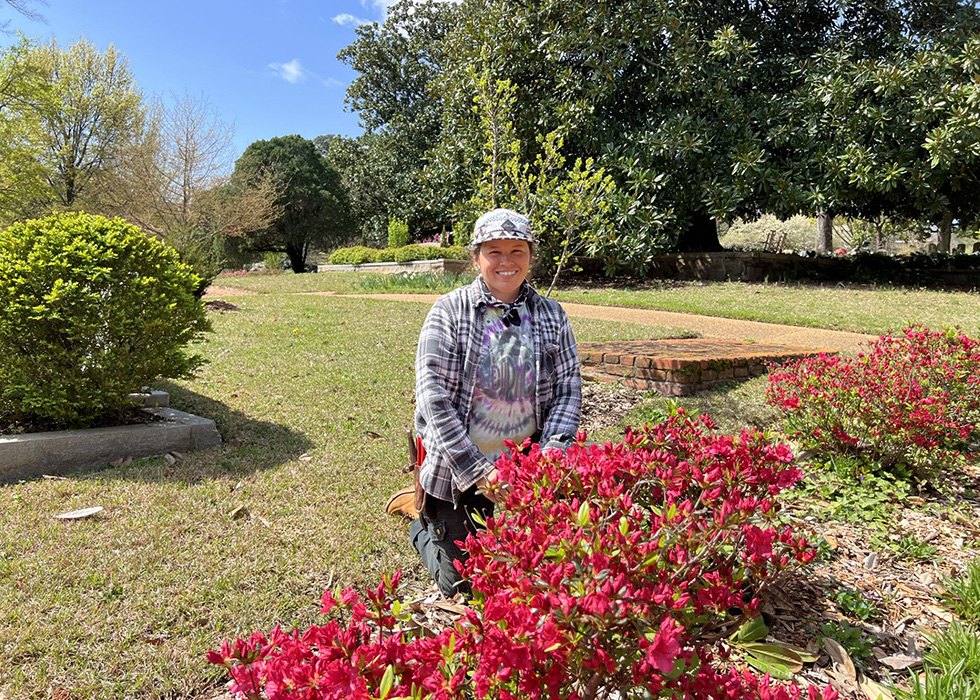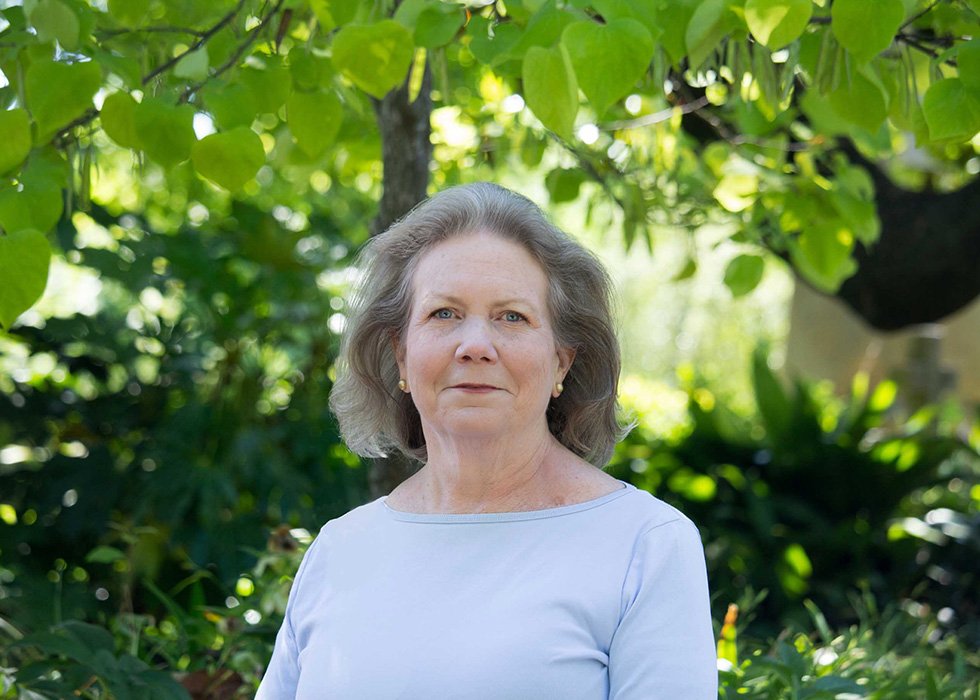
Fall is for Planting
By Erica Glasener
Fall is a great time to visit Oakland Cemetery for ideas about plants to add to your own garden, including shrubs, trees, and perennials. With cooler temperatures and autumn rains, it is also an ideal time to plant these plants. While Oakland may be known for its oaks including white, red, pin, blackjack and more, there are myriad possibilities to consider for trees from majestic oaks and elegant magnolias to demure dogwoods.
It’s easy to see why the native flowering dogwood, Cornus florida, is considered by many to be an aristocrat among small flowering trees. Its elegant spring blooms, (white, pink or red) brilliant fall foliage and striking winter bark all add up to a choice four season tree.
 Another native that displays color earlier in the season is sourwood, Oxydendrum arboreum. If you ever wondered about the source of Sourwood honey, now you know. In summer, it produces masses of pendulous, fragrant, lily-of-the-valley-like flowers. In fall orange, yellow, pink, lavender and wine-red leaves make for lively color. A slow grower, sourwood will reach heights of 20 to 25 feet or higher. Its distinctive outline, pyramidal with drooping branches, makes it easy to identify in the landscape, especially in winter, when the tan panicles of fruit persist.
Another native that displays color earlier in the season is sourwood, Oxydendrum arboreum. If you ever wondered about the source of Sourwood honey, now you know. In summer, it produces masses of pendulous, fragrant, lily-of-the-valley-like flowers. In fall orange, yellow, pink, lavender and wine-red leaves make for lively color. A slow grower, sourwood will reach heights of 20 to 25 feet or higher. Its distinctive outline, pyramidal with drooping branches, makes it easy to identify in the landscape, especially in winter, when the tan panicles of fruit persist.
Spectacular golden color is reason enough to grow Ginkgo biloba, known as Ginkgo. This tree glows in the soft autumn light and often the leaves drop all at the same time, creating a carpet of gold and extending the seasonal effect even longer.
The distinctive fan-shaped leaves and gray-brown bark add to the ornamental beauty of this fine tree. Its ability to tolerate air pollution and adapt to various types of soil make Ginkgo a choice tree for many different situations.
One of the oldest trees growing on earth for 150 million years, today Ginkgos grace boulevards and large sweeping lawns, and upright selections are popular for street tree plantings. At maturity, this exotic can grow 50 to 80 feet high or higher and 30 to 40 feet wide. For smaller gardens, there are also dwarf selections to consider.
One word of caution: before you purchase a Ginkgo tree, make sure that it is a male cultivar like ‘Autumn Gold,’ which has golden-yellow fall color and a broad conical form. The reason for this warning is that unnamed selections may be females, which will eventually produce messy and putrid smelling fruits.
In fact, bald cypress has proven to be well suited for both urban and suburban gardens and tolerates less than ideal conditions
A deciduous conifer, (which means it drops all of its needles in the winter, but don’t worry, new ones will replace them in the spring) the native bald cypress, also known as Taxodium distichum, doesn’t need damp soil or a swamp to thrive. In fact, bald cypress has proven to be well suited for both urban and suburban gardens and tolerates less than ideal conditions. While the species may grow 50 to 70’ tall or taller, weeping forms may reach 20’ high. The feathery green foliage provides interest all season culminating with a display of russet needles in autumn. In winter the bare branches offer their own subtle beauty.
Japanese maples come in a wide range of sizes and forms offering beautiful foliage throughout the growing season and interesting winter silhouettes, including those that are weeping or upright.
These are just a few of the varieties of trees growing at Oakland. Plan to visit often throughout the year and discover your own favorites.



